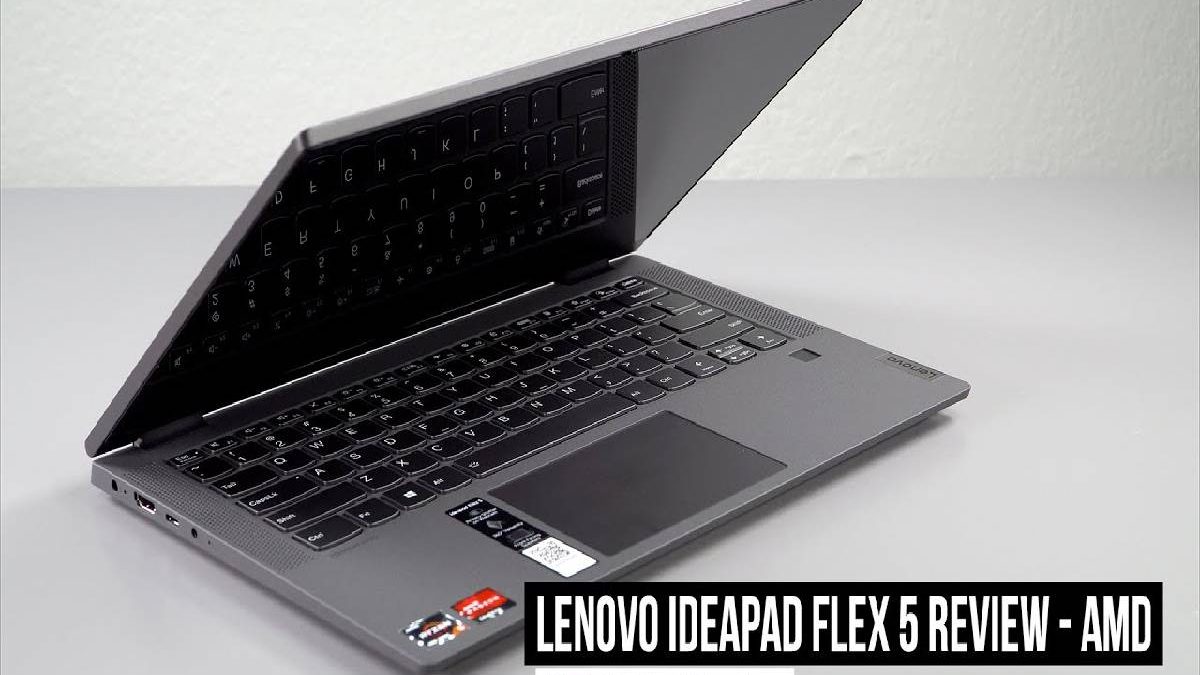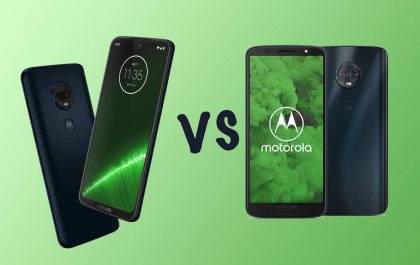With the inexpensive Lenovo IdeaPad Flex 5, Lenovo is sending an exciting 2-in-1 notebook into the race. With a new AMD Ryzen processor, IPS display, including touch function and aluminium cladding, the datasheet of the IdeaPad Flex 5 makes a good impression. You can find out what it looks like in practice in the test.
Table of Contents
Scope of Delivery
The scope of delivery of the Lenovo IdeaPad Flex is rather minimalistic. In addition to the convertible, only the charger and paperwork are in the packaging. For my taste, the charger could be a corner more minor. The use of a proprietary connection is also not surprising in this price range. Chargers that work via USB-C are already available for somewhat more expensive notebooks. Surprisingly, the Flex 5 also charges via its USB-C connector. A very nice bonus. So you don’t always have to lug the bulky charger with you.
The sparse use of plastic packaging emphasizes—only the protective holder of the laptop complete with styro foam. Otherwise, everything complete with thick cardboard. Many other manufacturers are welcome to learn from this more environmentally friendly practice.
Design and input devices: Great artistry and functional design
I especially liked the creation of Lenovo at a second glance. The angular wedge shape of the Lenovo IdeaPad Flex 5 does not reinvent the wheel, but it appears timeless in its matt silver.
The top is even coated with aluminium and pleases with its torsional stiffness. Even significantly more expensive notebooks don’t seem as solid as the IdeaPad Flex 5. The thickness of the display lid is also noticeable. Due to the narrow bottom, the Lenovo hardly falls out of the norm in terms of height. The solid metal hinges also contribute to an excellent overall impression.
They hold the display securely in position, whether it is open or closed. On the display lid, you will find an aluminium accent with Lenovo lettering.
The underside and inside of the Lenovo IdeaPad Flex 5 finish of matt, light grey plastic. It doesn’t feel as good to the touch as the metal coating of the display lid, but it is also immune to greasy fingers.
The display bezels are very narrow on the sides. Only a clearer stripe frames the screen at the top and bottom. There is also a webcam at the peak for this purpose. With its 720p resolution, it is suitable for the essentials. You can still recognize reasonably in good lighting conditions.
At 1.5 kilos, the Lenovo laptop is one of the lighter 14-inch devices. Thanks to a height of just 1.79 cm, it fits easily into most backpacks when folded.
In the last test of a Lenovo notebook – the very cheap V15 – I was positively surprised by the laptop’s keyboard. This trend continues in the Ideapad Flex 5. The keyboard has an enjoyable short key drop and a crisp pressure point.
Often, the keyboards of inexpensive notebooks are not a pleasant writing instrument. They often seem spongy, and when you write, you sometimes don’t even know whether you’ve just hit the key – or not.
The Flex 5, on the other hand, offers pleasant tactile feedback. The keys are all well-spaced and well dimensioned. Even bigger hands shouldn’t have any problems hitting the respective letter. The only omission on the part of Lenovo: The buttons on the IdeaPad Flex illuminate.
The touchpad is slightly shifted to the left and works very precisely. It is big enough and responds without any noticeable delay. However, it could be a bit more area-filling and look a little more haptically for my taste. Instead of a glass touchpad, the Flex 5 only offers you a matt plastic coating. The trackpad is still pleasant to use it.
Since it is a convertible, you can, of course, also use the touchscreen for input. That feels nice and high quality due to the glass surface. Thanks to the hinges, it is kept well in position, even in laptop mode. He reacts quickly and very precisely to your input. You can also use the IdeaPad with capacitive pens and draw correctly digitally.
Overall, the quality and ease of use of the Lenovo Ideapad Flex 5 have to be emphasized: Both are well above their price range. I especially like the built-in keyboard. Because she appears as a pleasant partner even with longer texts and offers good tactile feedback. In comparison to many low-priced competitors, Lenovo has not saved at the wrong end here.
Connections: SD card reader
In nominal terms, there is nothing to complain about on the connection side. Only one LAN port fell victim to the low height of the IdeaPad Flex 5’s bottom.
There is a full-fledged HDMI port on the left. You can connect your monitor or television to it quickly and easily. The 3.5 mm jack connection is located directly next to it. With it, you can hang both headphones and microphones on the Flex 5.
The previously mentioned USB-C port sits between the two. According to our shop, it should only offer to charge capacity. So I was all the more surprised when I could quickly move data from my smartphone via USB-C. As already mentioned, you can also set the IdeaPad via the connection. So you don’t always have to lug the relatively large charger with you.
Two USB Type-A ports await you on the right. Both connect with the fast USB 3.2 Gen1 standard. This gives you relatively high data throughputs of 5 GBit / s. We have written down a detailed breakdown of what which USB port can do here.
It is gratifying that Lenovo has not installed an ancient 2.0 port here. The 4-in-1 card reader is also a real boon. As a photographer, your photos end up on the Lenovo notebook in a much more relaxed manner.
Display: reflective, with good viewing angles – but suboptimal colours
The IdeaPad’s show makes an excellent impression at first glance. Thanks to IPS technology, the viewing angles remain stable, so nothing stands in the way of a shared Netflix evening on the laptop. Thanks to the high resolution of 1080p (Full HD), the display is razor-sharp.
Individual pixels can only be seen on the 14-inch screen when you get very close. However, the maximum brightness of 250 cd / m² could be a problem with a light source in the back because the screen’s coating is relatively reflective. In our test, the Lenovo display achieved the manufacturer’s specification pretty exactly with 252 nits. This is also perfectly fine in customarily lit rooms.
Related posts
Hot Topics
What is Live Streaming – Uses, Tweens and Teens Stream
What is Live Streaming? How to use it? Live Streaming apps have taken over the market and offer social media…
Moto G6 vs Moto G7 – Similar Design with Differences
Motorola Moto G7 vs Motorola Moto G6, what has changed? Moto G6 vs Moto G7 – The new Motorola Moto…



